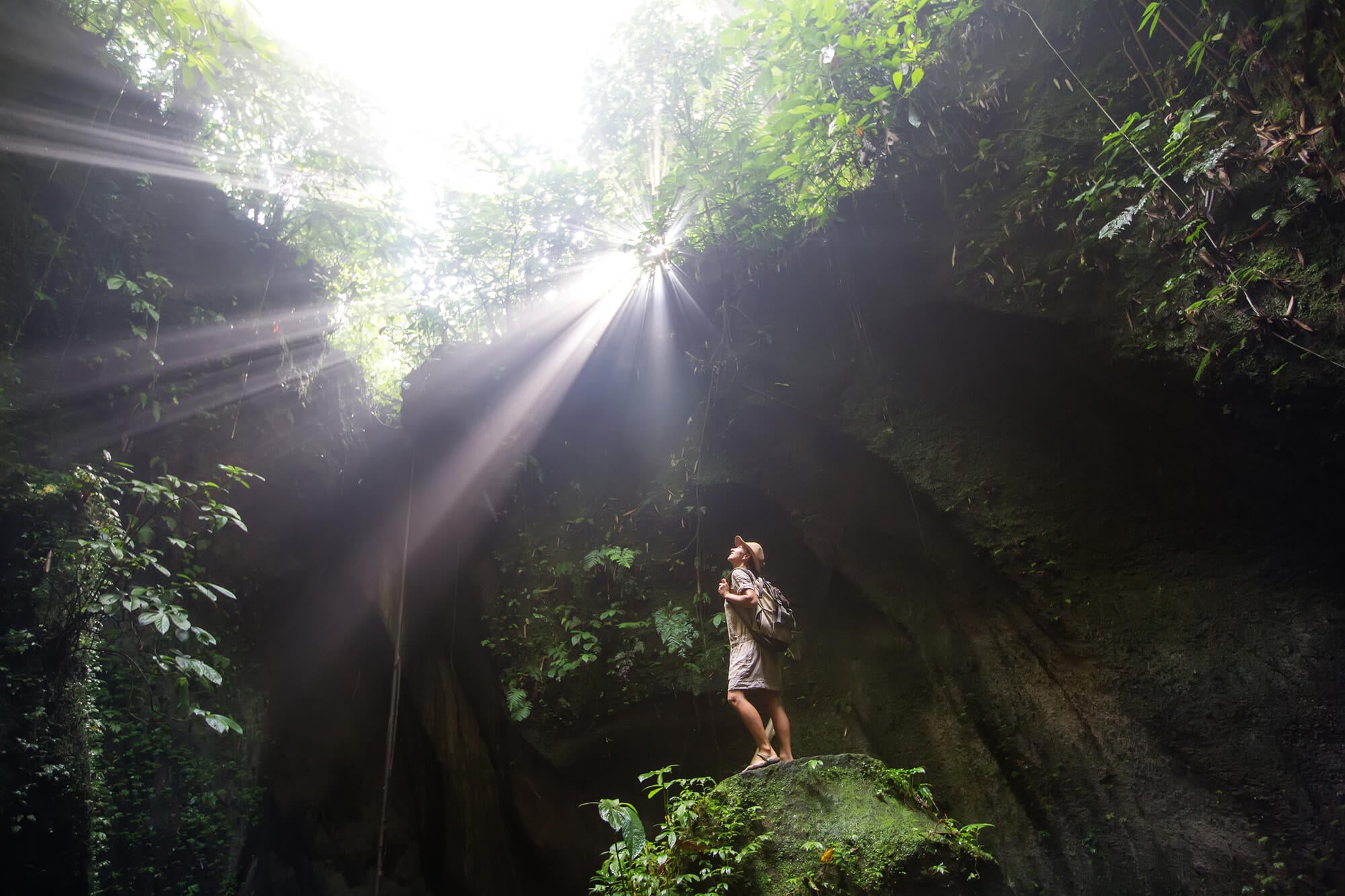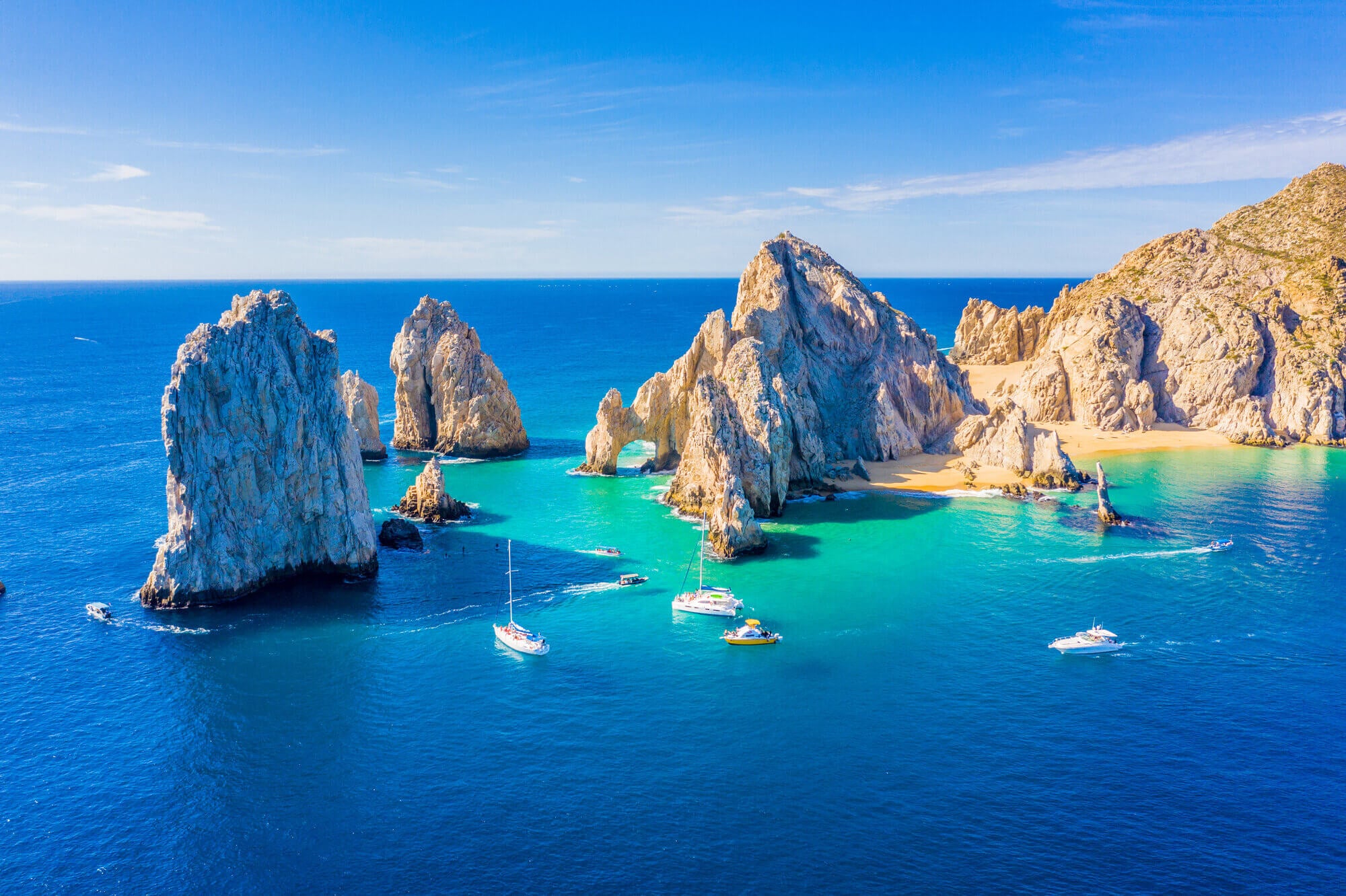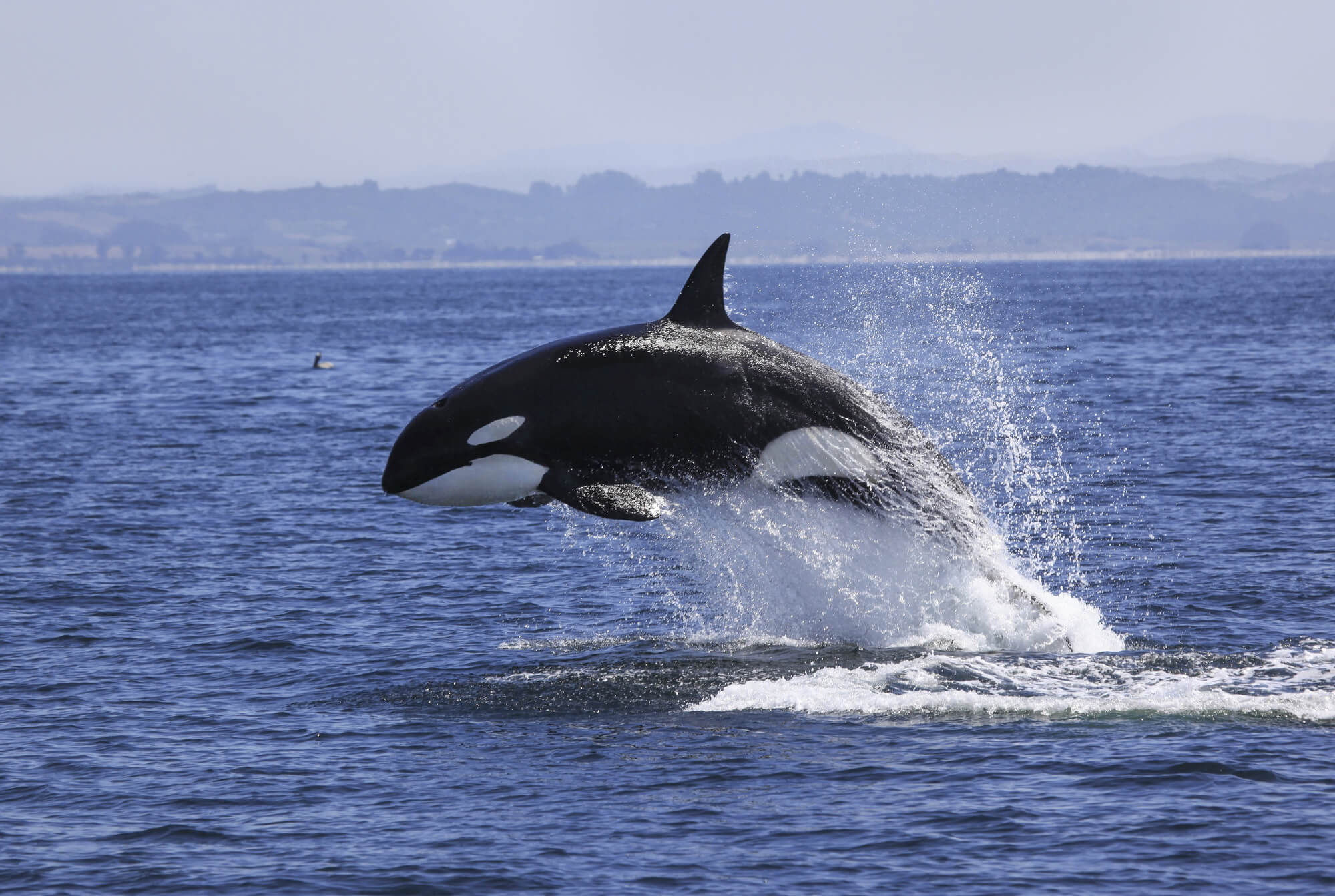What is ecotourism?
Ecotourism is a form of sustainable travel. It is defined as being beneficial to the environment and socio-economic well-being of local people. It is the opposite of mass tourism. Why is ecotourism so important? Well, here are just some of the ways in which eco-friendly travel benefits the planet;
- It protects natural environments, particularly when travelers are conscious about choosing sustainable excursions and tours in precious natural places.
- Benefits local communities, by shopping for handmade and locally produced items and eating in places that serve regional food.
- Fosters authentic and respectful relationships between local communities and tourists.
- Encourages biodiversity and wildlife conservation.
How does mass tourism affect vacation destinations?
We’ve all seen the newsreels and read the reports about the negative impacts of over-tourism, and also seen images of people packed onto beaches and jammed into narrow city streets. Destinations such as Venice, Cancun, and Dubrovnik are so popular that the sheer number of eager holidaymakers descending on them each year is causing harm to the people, animals, and the places themselves. Impacts of mass tourism include; overdevelopment, environmental damage, the loss of traditional culture, and socio-economic imbalance, which encourages pollutants and disregard for local wellbeing. But it’s not all bad news. Tourism has many positive effects on communities and destinations too. Sustainable travel is all about finding ways of enjoying these remarkable places while minimizing the negative impacts.

Top 10 tips for traveling responsibly and sustainably
It might seem overwhelming to try and change the effects of many years of unsustainable mass travel. But you don’t have to tackle it alone, and there are easy things that everybody can do. When added up these small steps will have a huge impact.
- Taking non-stop flights. Taking direct flights where possible will help drive down your carbon footprint. Takeoff and landing create the most carbon emissions.
- Find an airline with carbon offset policies.
- Take a refillable water bottle when you travel. You can get great collapsible, thermal, and reusable water bottles that are perfect for traveling with. Refilling your water bottle has two major bonuses; a massive reduction in the use of harmful single-use plastic, as well as saving you a ton of money.
- Use public transport, or walk whenever possible.
- When hiking, stay on the marked trails to protect the environment and yourself.
- Buy local, handmade, and authentic souvenirs and gifts, and avoid anything made from endangered animals or plants.
- Pack a lightweight, fabric shopping bag
- Be sure to ask for permission before photographing people
- Respect wildlife. Never feed or touch animals, and be wary of any companies offering hands-on animal experiences. Try to avoid companies that ‘chum’ water to attract sea life. This is a harmful practice that disrupts the natural hunting patterns and behavior of predators. Chumming is the process of throwing food, often consisting of fish and blood, into the water to attract sharks to approach boats. When it comes to animals, try to adopt an ‘admire from a distance but don’t touch’ approach.
- When diving or snorkeling, wear reef-safe sunscreen, and avoid touching or standing on delicate corals.
Fantastic destinations for ecotourism
If you’re interested in sustainable travel, but don’t know where to begin planning an eco-friendly vacation, take a look at some of our picks for amazing eco-travel destinations around the world.
Ecotourism in the USA
Sustainable tourism in California

California’s eco-credentials are as green as the state’s famous avocados. From community beach cleanups to eco-friendly excursions, it’s not hard to have a positive impact when vacationing in the Golden State.
California is home to the magnificent Yosemite National Park, where visitors are encouraged to respect and preserve the awe-inspiring landscape for future generations. 95% of Yosemite is protected from urban activity. The remaining 5% has hybrid shuttles and green concessions to ensure that visitor impact is kept to a minimum.
Ecotourism in Los Angeles
Los Angeles might not be your first thought for ecotourism in California, but it has an ace up its sparkly sleeve; L.A is one of the most walkable cities in the state. The best places to walk in Los Angeles include the iconic Hollywood Hills and the SoCal cool Venice Beach. Using your own two feet to get around not only helps keep air pollution and carbon emissions down but also gives you the opportunity to see and enjoy so much more of this fantastic city on Los Angeles walks. There are also local companies offering Walking tours in Los Angeles, giving you the inside scoop on living in the City of Angels.
Ocean conservation in California
One of the reasons that California is such a famous vacation destination is, of course, the beaches. Californians take beach protection very seriously indeed. Destinations like San Francisco, San Diego, and Huntington offer many ways to enjoy the glittering waters of the Pacific Ocean in a sustainable way. Huntington Beach runs a weekly ‘Help Your Harbor’ community drive to clean up pollution in the ocean. Volunteers can grab kayaks, paddleboards, or electric boats, get out on the water and help clean up the ocean with zero emissions. It’s a great way to give something back while enjoying the beautiful California coast.
How to have an eco-conscious vacation in Colorado

Colorado is an outdoor lover’s dream destination. The state is keen to ensure that the natural beauty of its mountains, lakes, and forests stays beautiful. Education and inspiration are at the heart of a lot of Colorado’s sustainability efforts.
Eco-friendly outdoor adventures in Colorado
One of the best ways to appreciate Colorado’s outdoor beauty is to visit one of the mountain resorts, such as Breckenridge. These places rely as much on their natural surroundings as they do tourism. This means that they make every effort to ensure that woodlands, parks, and green spaces are plentiful and protected. You can do many eco-friendly outdoor activities in Colorado, including rafting and hiking.
A fantastic place to visit to really immerse yourself in ecotourism and nature is The Garden of the Gods. This stunning attraction boasts incredible views and fun opportunities for the whole family to learn about this remarkable landscape. There are plenty of activities and things to do, including photography, hiking, and cycling tours. The money made from purchases goes directly to the conservation of the park.
Sustainable travel in Texas

Texas is an amazing state to explore agritourism, a form of ecotourism where visitors learn about local production and living off of the local environment. It also is a fabulous place for wildlife lovers; it is home to some of the best bird-watching places in America.
Sustainable animal encounters in Texas
Keen twitchers will want to flock to the World Birding Center. With 9 unique ecosystems within the Rio Grande National Park, it’s a great way to get to know over 500 bird species that call Texas home throughout the year. The World Birding Center is essentially an avian highway, being on the converging point of two major migratory routes. This gives it the greatest biodiversity of birds in the United States. It’s a great day trip for eco-conscious travelers who want to spot some of America’s finest feathered inhabitants.
If you prefer animals of a more scaly variety, you can pay a visit to Sea Turtle Inc. Founded in 1977 by the remarkable Ila Fox Loetscher, also known as ‘The Turtle Lady’, it is a conservation center that rehabilitates around 300 turtles every year. You can visit Turtle Inc to learn more about the crucial work and research that they do to protect these beautiful animals, as well as discover how we can help to protect them.
Texas also has opportunities for tourists to learn about the agriculture of the state. One of the most fragrant products is lavender. You can visit working lavender farms to explore how this delicate crop grows. Two great lavender farms to visit are Fredricksburg Lavender Farm and Blanco Lavender Farm, the latter of which holds a lavender festival every June.
Florida ecotourism
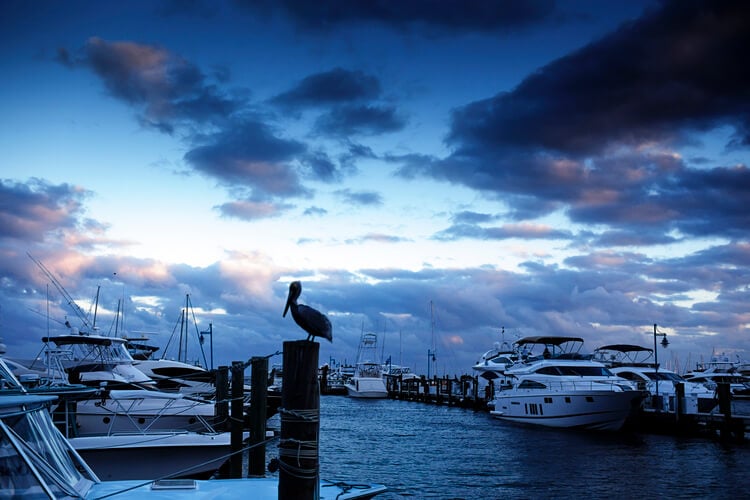
Florida is full of sustainable tourism experiences and adventures for travelers interested in ecotourism. The big one is, of course, the Everglades National Park. This remarkable wetlands ecosystem is home to some remarkable species, including the Florida Panther and alligators. You can visit the Everglades on a day trip and enjoy walking trails, environmentally friendly airboat tours, and wildlife spotting opportunities. Many cities in Florida, including Miami and Orlando, have bike rental schemes. By encouraging visitors and residents to take the green option for getting around, carbon emissions have been dramatically reduced.
Wildlife conservation experiences in Florida
The eco-conscious wildlife experiences in Florida don’t stop there. Half an hour northwest of Orlando is Lake Apopka, Florida’s fourth-largest lake. It has been the site of a remarkable conservation effort over the past decade. Targeted restoration efforts have dramatically reduced the levels of wildlife-damaging phosphorous in the area. The lake is now home to over 170 bird species, as well as mammals and reptiles. To see some of them, you can take the Lake Apopka wildlife drive. There is a speed limit of 10 mph, and the drive around the lake takes around 2 hours. It’s a fantastic activity for families keen to explore a real-life eco-success story in the heart of Florida.
Birds are also at the heart of another fantastic conservation effort, this time on the glitzy shores of Miami. The Pelican Harbor Seabird Station rescues and rehabilitates seabirds, raptors, and pelicans who are injured off the Floridian coast. They offer self-guided and custom tours, as well as sunset bird-watching opportunities.
If you want to get involved in the eco-action while on vacation in Miami, you can attend one of several ‘Sea Secrets’ lectures put on by The Rosenstiel School of Marine and Atmospheric Science at the University of Miami each year. These fun and informative lectures aim to inspire ordinary people to get involved in citizen science and play a vital role in protecting our oceans. You can also get a taste of the action on a citizen science project organized by the university. Twice a year, civilians are invited on shark tagging expeditions. These are fantastic opportunities to get involved in a project that really makes a difference.
Where to see Manatees in Florida in a wildlife-friendly setting
If you’re looking for a chance to get to know one of Florida’s most famous residents, head to Blue Spring State Park for a manatee sightseeing ecotourism adventure. Just 45 minutes north of Orlando, this amazing park is home to these incredible animals who head to warm waters in the winter months. Every effort is made to make the animals safe and relaxed, and visitors are strictly regulated to ensure the manatees’ comfort.
Eco-friendly Mexico vacations
Sustainable Adventures in Cancun
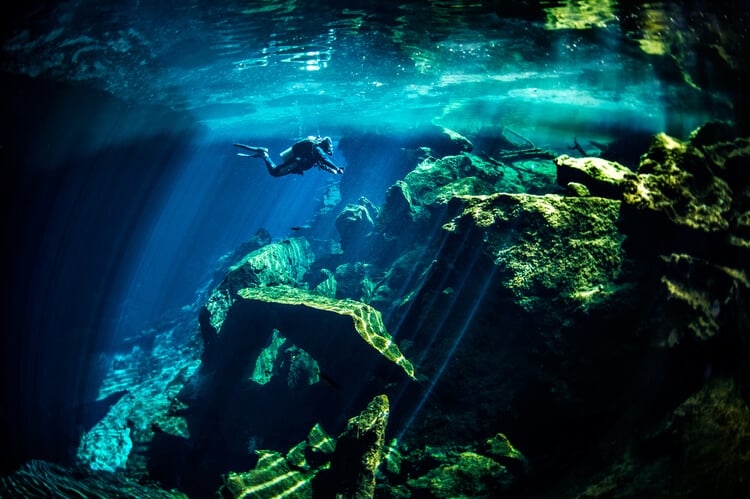
Cancun is one of the poster cities for mass tourism. With high-rise resorts, crammed beaches, and unsustainable over-commercialization, it doesn’t rank as one of the greener vacation destinations in North America. However, there are ways to enjoy Cancun, and other over-visited destinations, in a more eco-friendly way.
A good way to start is to seek out educational experiences that give you an insight into the authentic and traditional history and culture of Cancun and the Yucatan Peninsula. By learning about the customs and beliefs of a region, you help to keep those customs alive. This is also a great opportunity to learn a few words in the native language, rather than relying on everyone to speak English. The more people that learn even a little of local languages, the more of that language is preserved.
Museums and cultural experiences in Cancun
Places to go in Cancun to explore local culture include the Museo Maya de Cancun. This fascinating museum opened in 2012 and features Mayan art, archaeology, and history. It gives a brilliant insight into the rich history of the Yucatan Peninsula. You can also see relics and ruins of the Mayan people in nearby Tulum.
Relics of a different kind are at the amazing Cancun Underwater Museum. This unique attraction combines art and environmental science. It features statues created by artist Jason deCaires Taylor, made from marine-grade materials. The statues are at the bottom of the Mesoamerican Reef, off the coast of Cancun, where corals grow and, in time, create a new section of reef. The idea behind this ambitious project is to reverse some of the damage caused by the huge amount of human activity on the reef over the past decades. Over 500 life-size statues create an underwater community where new life can grow and thrive. The statues are visible on diving tours, or, if you prefer to keep your feet dry, a glass-bottom boat tour.
There are more amazing sites just a few hours outside of Cancun, at the Sian Ka’an Biosphere Reserve. A great park that covers 780000 acres, the environment consists of wetlands, forests, and a portion of the Mesoamerican Barrier Reef. The biosphere is the largest protected area in Yucatan. It’s home to 379 bird species, 328 types of butterfly, 115 mammal species, and sea life including manatees, dolphins, and sharks. Excursions into the reserve are available. Up to 6 people are allowed per group to minimize impact. For each tour, staff plant trees to offset the excursion’s carbon footprint.
Eco holidays in Europe
Eco and wildlife travel in Spain
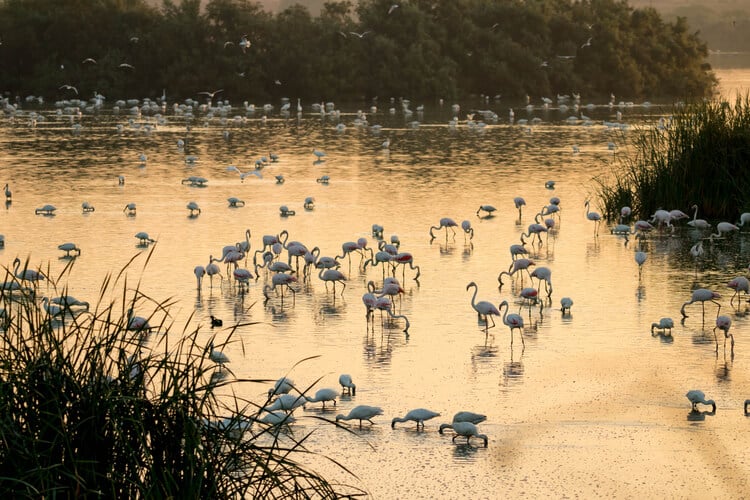
Spain is a big country with a staggering variety of landscapes and beauty. Spanish people are understandably proud of their country’s natural spaces. Many of the parks and reserves are accredited by the European Charter for Sustainable Tourism, which aims to improve attractions’ green credentials.
National parks in Spain
There are many fabulous national parks in Spain, including the Donana National Park in Andalusia. This fascinating landscape consists of marshland, shallow streams, and dunes. It’s home to migratory birds, such as the Egyptian mongoose, Spanish Imperial Eagles, and even the critically endangered Iberian Lynx, which only recently returned to the area following a multinational conservation effort. You can take guided wildlife watching and photography tours in the park. Money raised from entrance fees goes right back into the preservation of the landscape.
Another of Spain’s most popular ecotourism destinations is the Sierra Nevada National Park. Covering a massive 85883 hectares, the park spans three Spanish regions; Grenada, Almeria, and Malaga, as well as the largest mountain range in Spain. The park is a hotspot for outdoor, low-emission activities, including hiking, cycling, and visiting the region’s natural hot springs.
Away from the mainland, there is a rather special eco-destination for travelers who want to get off the beaten track. Off the south of Mallorca in the Balearics is the Archaeological de Cabrera National Park. It is a protected, undeveloped, unchanged coastal landscape, with 19 islands and islets. It is a haven for wildlife watching, scuba diving, and other outdoor activities. Only 200 people can visit per day to keep the environmental impact to a minimum.
Ecotourism in Portugal

Portugal is one of the most eco-friendly destinations for a vacation in Europe. With islands, cities, and towns that are perfect for wildlife spotting, cultural experiences, and outdoor adventures, there is a Portuguese destination for every type of eco traveler.
Sustainable vacations in The Azores
One of the most eco-friendly destinations in Europe is the Azores, an Atlantic island chain off the coast of Portugal. It is one of the world’s top places for whale watching. The waters off of the islands are frequently teeming with species including Sperm, Pilot, and Beaked Whales as well as 5 different dolphin species. Whale-watching tours are plentiful, and they all ensure that the animals are given plenty of space and are not hassled by tour groups. The islands have also resisted the temptation to encourage mass tourism. There are no high-rise hotels or over-developed resorts in the Azores. Instead, you’ll find locally run establishments and restaurants serving up regional and seasonal food from the islands.
Madeira eco travel
The Azores are not the only Portuguese islands shaking up the ecotourism scene. Madeira, also known as the Island of Eternal Spring, is another wild destination that is full of sustainable potential. Although the capital Funchal is very touristy, with tall hotels and busy shopping streets, the rest of the island is ideal for enjoying a slow pace of travel and has a plethora of outdoor activities. An iconic Maderia activity is hiking along the levadas, a network of historic drainage gullies that crisscross the island. You can use them as route markers to explore the amazing walks of Madeira, and also learn about the island’s history along the way.
Natural Attractions in Mainland Portugal
Mainland Portugal doesn’t miss out on the sustainable travel front. In the north of the country is the Peneda-Geres National Park. It encompasses an incredible variety of landscapes, from mountain ranges to glacial valleys, as well as over 90 villages. It’s a fantastic destination to escape the rat race and reconnect with nature in one of Europe’s least-visited national parks.
Eco vacations in the Caribbean
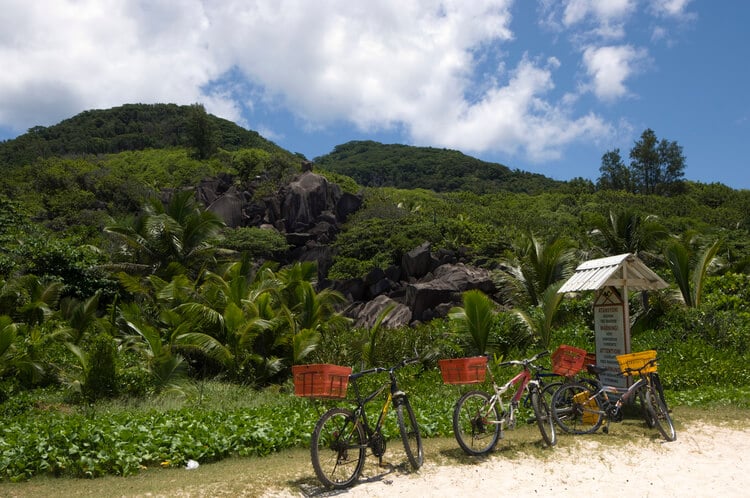
Sustainable vacation activities in Grenada
Grenada is one of the most proactive Caribbean islands when it comes to sustainable development and ecotourism. The island’s government and residents are focused on improving agriculture and environmental practices, as well as encouraging tourists to take up the mantle of keeping the island green.
The island is one of the best vacation destinations to really get to know more about every life, history, and culture in the Caribbean. There is a packed social calendar with authentic local festivals and events. One such annual highlight is the Grenada Chocolate Festival, celebrating the art of cocoa production. There is also the Carriacou Maroon and String Band Festival, which brings Grenadan music and culture to the forefront.
National parks and reserves in Grenada
You can explore the beautiful island that locals are so keen to protect and preserve in one of the national parks and reserves across Grenada. Levera National Park is a highlight and is a nesting ground for the beautiful Leatherback Turtles. The beaches are protected during hatching season when baby Leatherbacks emerge from their sandy creches and take their first journey to the wide ocean.
Adventurous travelers can get an adrenaline rush without leaving a trace of their visit to Grand Etang Forest Preserve. Eco-friendly activities including rafting, river tubing, bird watching, and trekking are all available and offer an opportunity to get up close and personal with Grenada’s unique and vibrant ecosystems in a sustainable way.
Isla Holbox ecotourism
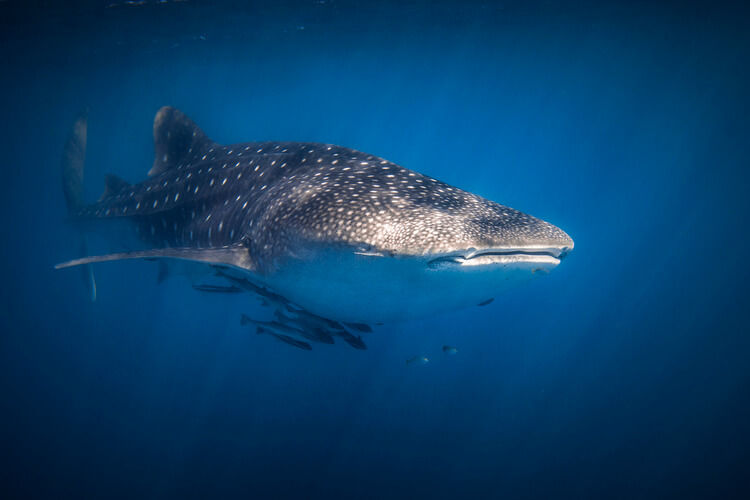
Northwest of Cancun, 3 hours by bus from the city airport is a Caribbean island that has become a hub of ecotourism in the region. Isla Holbox is a fishing village, separated from the mainland by a lagoon. It is a haven for birds and endangered species. The island is a biosphere reserve, and to protect the menagerie of wildlife living there, there are no cars. Golf carts and walking are the only ways to get around, making it a great destination if you want to lower your carbon footprint.
How to see whale sharks in Isla Holbox in an eco-friendly way
If that’s not enough to tempt you, perhaps a rather special annual gathering will? We’re talking about the incredible sight of hundreds of mighty, majestic whale sharks. The enigmatic gentle giants of the ocean gather off of Isla Holbox every year from June to September. The chance to see one of nature’s most amazing creatures is something that attracts visitors to Mexico year-round. Sadly, as a result of this interest, some unsustainable practices have sprung up to meet demand. Many companies offer the chance to swim with Whale Sharks, and as the waters around the mighty beasts become crowded with well-meaning admirers, the animals can become distressed.
Many companies have responded by limiting the number of tours they offer per day, cutting down to give the sharks some breathing space. If you want to get onto or into the water with whale sharks, look out for companies that are affiliated with wildlife or conservation organizations, such as the World Wildlife Fund. If you’re unsure, ask questions before you book. No reputable company with the animal’s best interests at heart will be offended by you asking questions before you decide to book.
Sustainable travel in Asia
Ecotourism in Thailand

Thailand is one of the most progressive countries when it comes to changing into an ecotourism destination. Following a widely publicized public interest in the impacts of animal captivity and tourism, Thailand has helped to lead the way in overhauling a once less-than-stellar reputation. At the forefront of this change were elephants.
For many years, it was a right-of-passage for visitors to Thailand to climb aboard an elephant and take a ride. What most didn’t realize, was that this practice had an awful impact on the animals, as demand grew and more animals were taken into captivity to meet it. Prices were slashed to compete with a market overstuffed with elephant riding activities, and that price cut translated into poorer conditions for the elephants themselves. Following an unflattering international spotlight from conservation groups, Thailand has made a mammoth effort to overhaul this industry. Although some elephant ride experiences still persist, you’re now much more likely to see elephants looked after in sanctuaries, away from the stresses and strains of the performative tourist industry. You can visit conservation-minded elephant sanctuaries all over the country, in popular resorts such as Phuket and Koh Samui.
National Parks in Thailand
There is so much to do for nature lovers in Thailand to keep your eco-impact to a minimum. There are many national parks to explore, such as the magnificent Ang Thong Marine National Park, near Koh Samui. The park consists of 42 islands, limestone mountains, caves, and lagoons, and spreads over more than 100 sq km of land and sea. It’s a wonderful place to enjoy some fantastic outdoor activities in Thailand.
Visitors can enjoy activities such as snorkeling, scuba diving, rock climbing, and hiking. On the popular Andaman Coast, Phuket also has an oasis of beauty and calm amidst the touristy resorts and party beaches. The Khao Phra National Park is home to the only virgin rainforest in Phuket. It also has the island’s highest and most spectacular waterfall, Bang Phae. There are over 100 species of birds living in the park, as well as langurs, monkeys, and deer.
Ecotourism in Indonesia
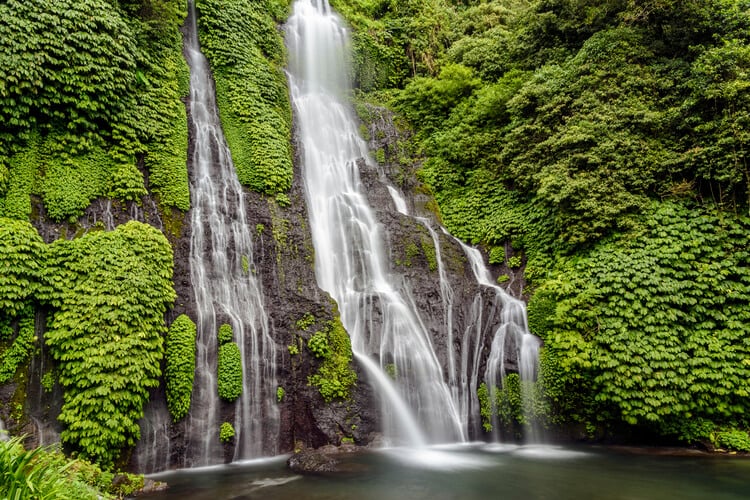
Long associated with wellness and sustainability, Bali, Indonesia is the first destination on many minds when it comes to ecotourism.
Although the main tourist areas have become much more developed in the past decade, there are still pockets of untouched beauty on the island. West Bali National Park feels a world away from the hustle and bustle of the main tourist resorts. It is a fantastic place for mountain biking, trekking, bird watching, and also unforgettable forest safaris. The park contains many endangered and unique species of plants and animals, such as the rare Bali Starling.
Komodo Island, Indonesia
Elsewhere in Indonesia, one of the most exciting and famous nature destinations on Earth lies a short plane ride away from Bali. It is, of course, Komodo Island, home to the eponymous dragons, pink sand beaches, and some of the most unique ecosystems on the planet. Visits to the land of the dragons are closely monitored and guided by experts, who know exactly how to ensure that visits are sustainable, relaxing, and safe, for both the mighty lizards and the tourists.

